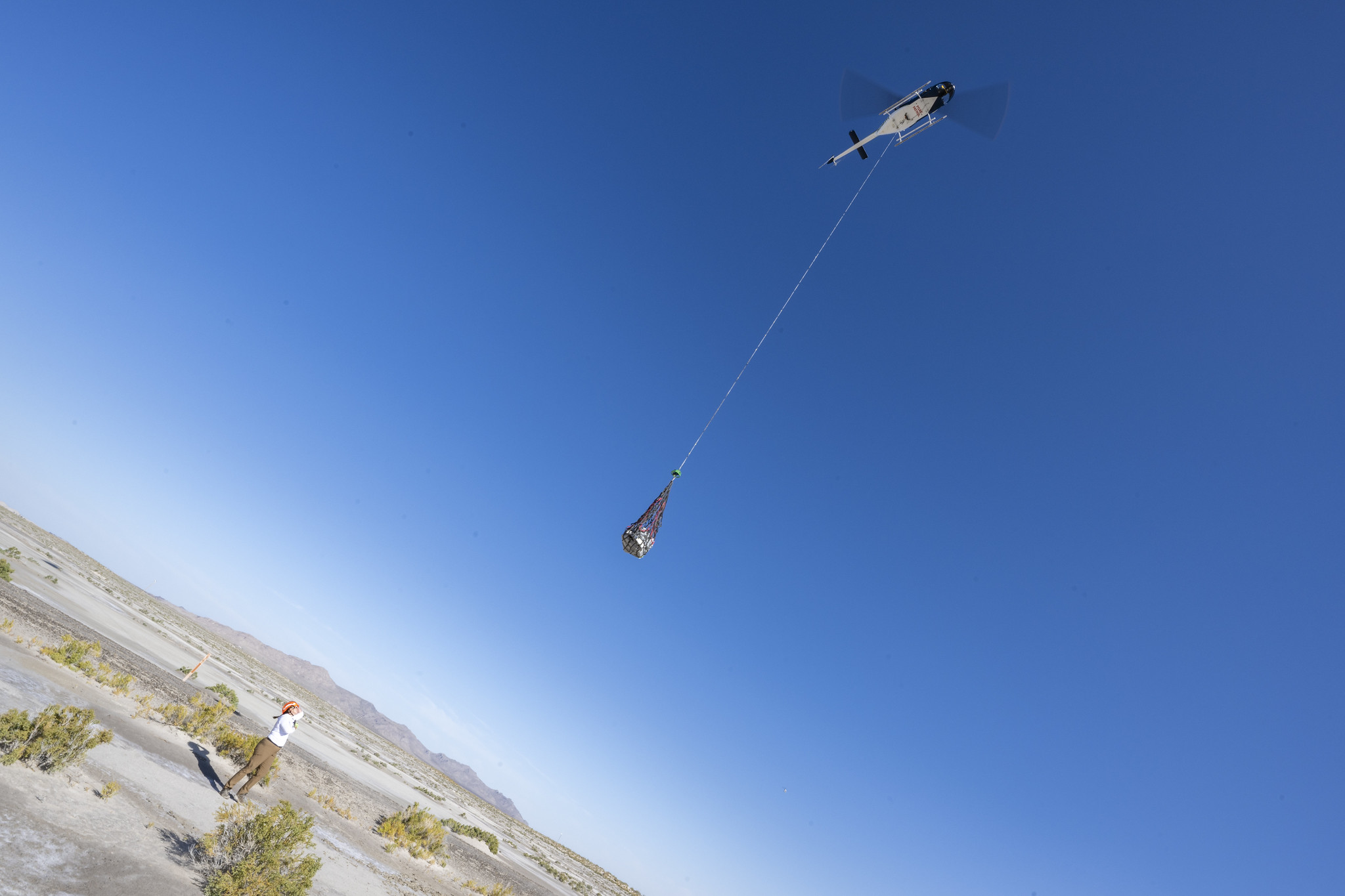The OSIRIS-REx sample return capsule was not even cold on the ground – it reached 2,900°C (5,300°F) as it used the atmosphere to slow down – before some people on the internet were already questioning whether it might have brought alien pathogens with it. We’re pretty confident that the answer to that is a big fat no, here’s why.
NASA’s first asteroid sample return mission scooped a sample of material from the surface of asteroid Bennu three years ago. Its goal was to collect about 60 grams (2 ounces) of rubble but NASA estimates it might have grabbed four times as much. These grains and pebbles will provide insights into the early Solar system when Bennu formed. Based on the findings from Japan’s two Hayabusa missions, the first to bring samples of asteroids to Earth, interesting organic materials might even be found: molecules that can be precursors to life, like amino acids. But life forms themselves? That is a possibility so remote it’s hard to quantify.
Life on Bennu?
Bennu is a tiny rock, about half a kilometer (one-third of a mile) wide. It has no nutrients, no atmosphere, and no water (although some asteroid rocks were altered by water). It is showered by ultraviolet light, known for its ability to destroy biological tissue.
There are plenty of scenarios – such as the panspermia hypothesis – that hypothesize life travels the cosmos via asteroids, meteors, and comets. And maybe it does, but it’s not sunbathing on the surface of Bennu where the OSIRIS-REx sample comes from. It would be buried deep to survive both UV light and cosmic rays (assuming it survived such a journey).
Science fact not fiction
OSIRIS-REx dropping a capsule from space into a US airbase is remarkably similar to the premise of Michael Crichton’s The Andromeda Strain, where a deadly extraterrestrial microorganism hitched a ride on a military satellite that returned to Earth in Arizona. But the sample return capsule is actually designed to perfectly isolate the sample from Earth, and it’s not to protect us, it’s to protect the precious material recovered.
The design of the capsule has an intricate labyrinthine structure inside to minimize contamination. After the capsule landed, the team also collected samples from the area where it touched down to rule out contamination.

The sample return capsule was airlifted from the landing site.
Image Credit: NASA/Keegan Barber
We learned from our mistakes
This is not the first time cosmic material has been brought to the US. Moon rocks were collected by the Apollo astronauts. NASA’s Genesis and Stardust missions went to collect samples of the solar wind and comet Wild-2, respectively. However, due to a design flaw, the Genesis capsule’s parachute didn’t open when it returned to Earth in 2004 and it crash-landed, breaking open on impact. Some of the samples were contaminated, although some were successfully recovered.
“Successfully delivering samples from Bennu to Earth is a triumph of collaborative ingenuity and a testament to what we can accomplish when we unite with a common purpose,” OSIRIS-REx principal investigator Dante Lauretta said in a statement. “We now have the unprecedented opportunity to analyze these samples and delve deeper into the secrets of our solar system.”
For us, this was the World Series, ninth inning, bases-loaded moment, and this team knocked it out of the park.
Rich Burns, project manager for OSIRIS-REx
“The whole team had butterflies today, but that’s the focused anticipation of a critical event by a well-prepared team,” said Rich Burns, project manager for OSIRIS-REx at NASA’s Goddard Space Flight Center. “For us, this was the World Series, ninth inning, bases-loaded moment, and this team knocked it out of the park.”
Where is the asteroid sample now?
Once landed, the capsule was inspected to make sure it was safe to approach. It was then packed and airlifted to a clean room where the heat shield and back shell were removed, and then the whole sample container was flushed with nitrogen to remove oxygen and moisture.
Today it was flown via a Boeing C-17 plane to NASA’s Jonhson Space Center, in Texas. There the sample will be opened, divided, and shared with others for scientific analysis.
“That is where the science canister itself will be opened. It will be opened in a specialized clean room and inside a glovebox,” Sandy Freund, the OSIRIS-REx mission operations manager for Lockheed Martin, previously told IFLScience. “The first time the sample will be exposed will happen down at Houston.”

The capsule being opened in the Utah clean room
Image Credit: NASA/Keegan Barber
About three-quarters of the sample from Bennu will be stored for future analysis. This is similar to the 60 percent that was stored from Hayabusa-2 when it returned with samples of asteroid Ryugu in 2020. In the case of Bennu, not all of it will be stored at the Johnson Space Center. Some will be kept safe elsewhere to ensure the safety of the samples should anything happen to the Johnson Space Center, and some will be sent to other institutions. Scientists have already practiced how to move the samples around.
“We’re going to hand carry them. So either me or a colleague will go over and collect them from the Johnson Space Center,” Professor Sara Russell, part of the OSIRIS-REx Sample Analysis Team from the Natural History Museum, London, told IFLScience. “But the Johnson Space Center is also happy to send them by courier as well. Actually, we had to rehearse this. Everything in this mission is so well rehearsed.”
Scientific analysis will begin immediately. Insights, discoveries, and papers will start being released in the coming months and will continue for decades to come. And while it might not have brought alien life, the asteroid sample might provide a new understanding of how molecules crucial for life on Earth came to be on our planet.
Source Link: OSIRIS-REx Has Not Brought “Asteroid Germs” Back To Earth